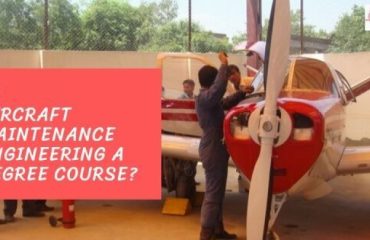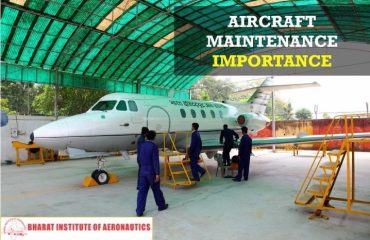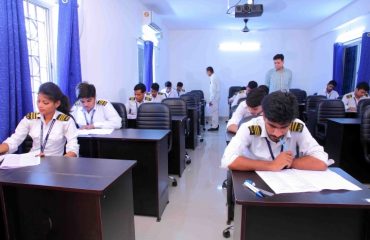An Aircraft Maintenance Engineer has multiple responsibilities at any given time. But there’s no greater ongoing duty than fostering a workplace culture that focuses on keeping the aircraft maintenance technicians safe.
Of course, one of the greatest threats to this endeavor is the constant risk of complacency. And everything from wearing the right protective equipment to using the right aircraft equipment is ultimately the result of a technician making a responsible decision at an appropriate time.
Thus, throughout this article, we’ll examine some of the risks in the aviation maintenance workplace. Along with some simple ways to Ensure Safety with Aircraft Maintenance Engineers and to promote good practices among this personnel.
You might refer reading: Aircraft Maintenance Engineering in Patna
Every Profession Has Its Own Potential Hazards Attached To It
Some of the potential List of Aviation Hazards from as follows:
- Fatigue and Sleepiness
- Stress
- Medical Problems
- Age
Therefore, it is important to communicate with your employees to identify any problems they have. The best MRO managers find solutions that allow for efficient work and healthy, happy maintenance technicians.
How to Ensure Safety with Aircraft Maintenance Engineers?
The best way to avoid such incidents and Ensure Safety with Aircraft Maintenance Engineers is to plan. Detailed planning is vital for thorough maintenance, as well as employee safety too.
Additionally, frequent employee safety training by Hangar Safety PDF or Safety in Aircraft Maintenance PPT is the best way to educate your crew and keep them vigilant.
Also, most of the Aviation Training Institute teaches its students about the safety and precautions in this job in their course. You can refer to the Aircraft Maintenance Engineering Course Details to know about this.
However, here we have mentioned some Aircraft Maintenance Safety Precautions to include both in your training and in your overall safety plan:
Review Risk Management Practices
When on the job, employees should do their best to keep their minds clear of distractions that will take attention away from their work. Even the most experienced mechanics get distracted sometimes.
By following risk management practices, technicians can avoid simple mistakes that can lead to severe accidents. Therefore, must Remind your crew that it’s a good idea to double-check even simple maintenance tasks to make sure not to forget anything.
Follow the Appropriate Procedures
Aircraft Maintenance technicians should always follow approved data and procedures when performing any maintenance operation. Service manuals are thus essential references with detailed information about “how to complete each task and any specific tools required”.
Also, keep in mind that for maintenance items that aren’t included in your service manuals. It is a good idea to find references for your mechanics so that they are all using the same standardized, approved procedure.
Use Safety Signs
Any reminder of safety protocol is a good idea. That’s why clearly-displayed signs that remind technicians to adhere to basics — like wearing a safety harness when working on top of wings and fuselages — is both a cost-effective and consistent method of pushing safety to the forefront of your team’s mind.
Also, remember that the use of safety flags and other caution signage is a great way to promote safety. This is when your technicians might otherwise be getting complacent working in a familiar space.
Ensure Team Communication Is Effective
Just because you haven’t had an accident that occurs in your hangar lately doesn’t mean your team is immune from one tomorrow. By regularly holding safety meetings and bringing up safety issues whenever you communicate is important information to your personnel. You’ll go a long way toward being proactive instead of reactive.
Be Prepared for the Worst
From clearly marked eyewash units and first aid kits to fire suppression equipment and emergency exits, you must be ready to respond to accidents when they happen.
And make sure all members of your teams are fully trained in the use of emergency equipment. This is crucial for being prepared for a worst-case scenario. Remember — in an emergency, every second count.
Aircraft Maintenance Engineer Skills
Apart from theoretical and practical knowledge, the Aircraft Maintenance Engineer CV should also have certain qualities or skills to be successful in this profession.
Some of the skills required for becoming an Aircraft Maintenance Engineer are:
- Time management
- Developing a plan
- Attention in detail
- Working with the technology
- Verbal communication
- Cooperating
- Researching
- Observation
- Problem-solving
Apart from these skills, other skills include – being observant, an eye for detail, problem-solving attitude, and communication skills.
The aircraft maintenance engineers should have a knack towards trends in the aviation sector and keep themselves updated regularly to perform better and to get a good Aircraft Maintenance Salary.
How to Become an Aircraft Maintenance Engineer in India?
To get this license one has to complete an Aircraft Maintenance Engineering Degree from a certified and Top Aircraft Maintenance Engineering Colleges in India.
The license is valid internationally widespread and is recognized by the international bodies that deal with safety and security rules and regulations for civil aviation in the world.
So, if you are planning to make your career in this field and looking for an Aviation Training Institute in Patna, then you must join BIA Patna.
For taking admission to BIA you have to apply online or offline at www.biapatna.org. The exam will be conducted to provide scholarships to top meritorious students who outperform in the test.
Note: to know more about BIA refer to its website
So, here we will put an end to this blog for ‘How to Ensure Safety with Aircraft Maintenance Engineers’. We hope that you find this blog informative.
Till then, stay tuned………………….






Very informative and well description about aircraft maintenance in this post. Many people will get helpful from this one. Thanks for sharing it with us.